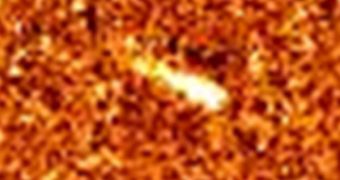As we reported earlier, the Hubble Space Telescope has revealed that space object P/2010 A2 is most likely a pair of colliding asteroids. The same conclusions come from data collected using the Rosetta spacecraft as well.
The probe, which is operated by the European Space Agency (ESA), is a comet-chaser, but it happened to catch a glimpse of the space objects as they were flying in its surrounding.
Unlike Hubble, which is confined to low-Earth orbit (LEO), Rosetta had a unique vantage point in conducting its observations, as it is located very far away from the planet.
Its intended mission is to study the comet 67P/Churyumov-Gerasimenko, but the spacecraft also performed, or will perform, flybys around Earth, Mars, asteroid 2867 Steins, and asteroid 21 Lutetia.
The new observations were conducted using the OSIRIS (Optical, Spectroscopic, and Infrared Remote Imaging System) camera, which features both a narrow-angle lens (700 mm) and a wide-angle one (140 mm),
Datasets obtained from this research showed that the debris were indeed caused by a pair of colliding asteroids, and not a comet, as researchers had previously assumed.
“We knew that we needed to look at P/2010 A2 from a different angle and Rosetta provided exactly that,” explains German researcher Colin Snodgrass, who is based at the Max Planck Institute for Solar System Research.
One of the main things that gave the peculiar structure away was the fact that it did not poses a central condensation area from which the debris field originated. This is what a comet looks like.
The structure was made up of just a tail, and, as the Hubble images show, an X-shaped object leading the way, experts at the European Space Agency write in a press release.
“It is truly exciting to see an object that has been in a collision so recently,” explains Rosetta project scientist and ESA expert Rita Schulz.
“Asteroid P/2010 A2 could be a taste of things to come,” Snodgrass says in reference to the new array of studies that could be enabled by the next generation of spacecrafts and orbital telescopes.
Improvements that are currently being researched will enable future observatories to survey the inner asteroid belt in more detail, and detect collisions between space rocks of varied sizes.
At this point, these events become visible only when they occur between large asteroids, but more sensitive instruments will allow us to see even smaller impacts.

 14 DAY TRIAL //
14 DAY TRIAL //